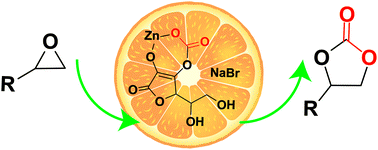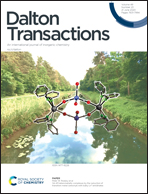CO2 coupling with epoxides catalysed by using one-pot synthesised, in situ activated zinc ascorbate under ambient conditions†
Abstract
An in situ generated zinc ascorbate pre-catalyst for cyclic carbonate (CC) synthesis via CO2 coupling with epoxides under ambient conditions was reported. Spectroscopic measurements indicated that CO2 was inserted into the zinc ascorbate complex through the formation of an activated zinc carbonate catalyst upon abstracting the enediol protons with sodium hydride. The aliphatic diols were not activated under the applied conditions and did not interfere with either the process of cycloaddition or CO2 activation. The catalyst was active against different terminal epoxides, with a conversion of 75 and 85%, when propylene oxide and styrene oxide were used at 20 and 50 °C, respectively under 1 atm CO2 for 17 h, which was considered a good advancement for heterogeneous based catalysis. Moreover, green chemistry principles were applied to ultimately end up with more ecofriendly approaches for the synthesis of CC following a simple balloon technique. Herein, we used zinc as a sustainable metal, together with ascorbic acid as a bio-renewable material in addition to CO2 as a renewable feed-stock. Furthermore, waste prevention was achieved using the reaction side product, viz., NaBr as a co-catalyst.



 Please wait while we load your content...
Please wait while we load your content...